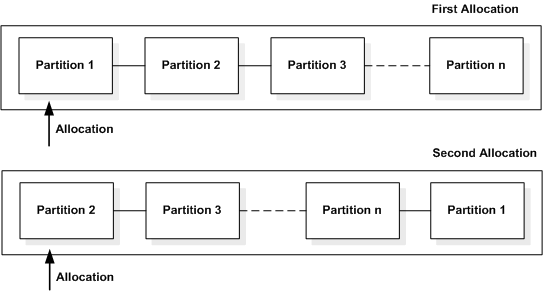By default, Replication Server assigns queue segments to the first partition in an ordered list of partitions.
When the first partition becomes full, the first partition becomes the last partition, and the next queue segment is allocated to the new first partition. When the default method is used, the rolling allocation of segments is automatic and cannot be controlled by the user.
-
When the queue segment request is sent for the first time, Replication Server selects the first partition from the list of internal partitions, and moves it to the end of the list after allocating queue segments.
-
When subsequent queue segment requests are sent, Replication Server allocates queue segments from a previous partition provided it has enough space. If not, Replication Server allocates queue segments to the first partition with enough space from the list of internal partitions, and moves it to end of the list.
